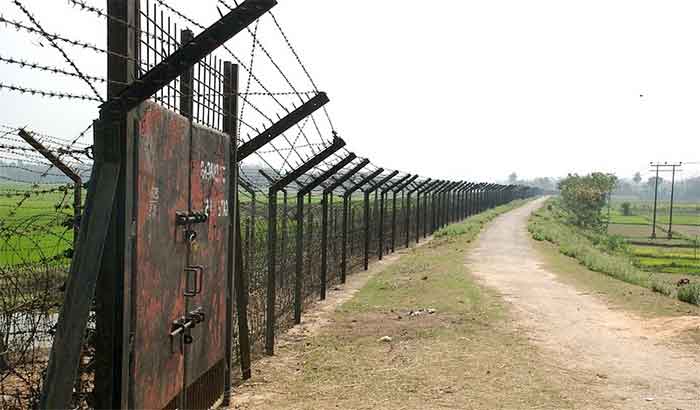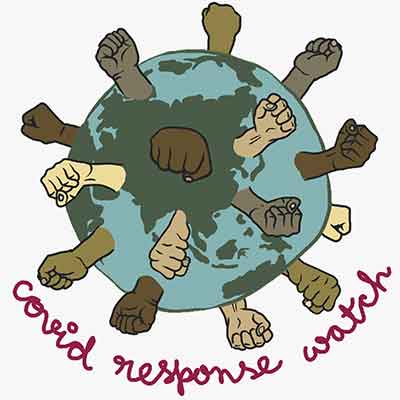
They are called ‘chitmahals’ or ‘paper palaces’. For decades, the people living in these twilight zones on the border between India and Bangladesh have been searching for citizenship, constitutional rights and a national identity.
Over 15,000 people live in these enclaves on the Indian side of the border and in make-shift camps which have come up in recent times near Cooch Behar in North Bengal. Denied basic rights by both India and Bangladesh for long, these settlements are surrounded by miles of barbed wires, with heavy deployment of the Border Security Force (BSF).
A treaty signed on July 31, 2015, between the Indian and Bangladeshi governments, had given the locals hope as it bestowed citizenship and fundamental rights to people on both sides of the border. Under this agreement, India received 51 Bangladeshi enclaves in the Indian mainland, while Bangladesh received 111 Indian enclaves in the Bangladeshi mainland.
Six years later, the Land Boundary Agreement (LBA) as it is called remains to be fully and effectively implemented. Despite several pleas and petitions, protests and promises the district administration has shown lack of response and repeated insensitivity to authentic problems on the grounds. For decades since Independence, the enclave dwellers were excluded from any infrastructure benefits. There were no schools, markets, medical facilities; no electricity. Roads were not repaired and potable water was unavailable.
The 2015 LBA between India and Bangladesh has not resulted in a change in the situation. During Covid and the lockdowns of the last two years, the social and economic crisis has multiplied for the people in the chitmahals.
“There are several social security schemes of the West Bengal government, like the ‘duare shorkare – which ensures basic supply of rations for the economically deprived sections at their door-step, education for girl children, the Lakshmi Bhandar schemes for poor and SC-ST women, health insurance for women. In places where the district administration and the local political power structures do not exercise their will or choose to effectively intervene – the schemes do not work. For instance, there are self-employment schemes in the government programmes – but where are they on the ground even as the pandemic has pushed thousands of people in the border in deep financial crisis,’’ said Kirity Roy, Secretary, Banglar Manabadhikar Suraksha Mancha (Masum).
 According to Roy, every family in these former ‘chitmahals’ has one or two migrant workers on whom the families depend for their daily food and life. Most of them are still afraid to go back to their place of work across the country. Many of them have little or no land. They are really facing a tough time. Many migrant workers were stranded. So Masum activated its alliances and networks across the country to reach out and help the migrant workers with food and other essentials.
According to Roy, every family in these former ‘chitmahals’ has one or two migrant workers on whom the families depend for their daily food and life. Most of them are still afraid to go back to their place of work across the country. Many of them have little or no land. They are really facing a tough time. Many migrant workers were stranded. So Masum activated its alliances and networks across the country to reach out and help the migrant workers with food and other essentials.
According to Dipyaman Adhikari, Assistant Secretary, Masum, all those who have agricultural land for sustenance have somewhat been able to survive despite the lockdown. However, almost 30 per cent of enclave and camp dwellers are migrant workers dependent on their labour and employment across the country, in the brick kilns, construction industry as masons, raj mistris and labourers, and in the unorganized sector. These workers are facing huge economic difficulties since the pandemic.
The chitmahals are a melting point of sorts, complex products of many decades of borderless existential exchanges between people, societies, cultures, trade and local economies. They have lived without borders and maps for decades and also faced the uncertainties of borders and barbed wires imposed arbitrarily by an unaccountable and insensitive State apparatus, without a clear and precise understanding of the complex reality on the ground.
The big problem is identity and citizenship rights, according to Dipyaman Adhikari. Many of them have got Aadhaar and voter ID cards, but the basic papers to prove their identities as Indian citizens under the Indian Citizenship Act, 1955, still remains elusive. The July 2015 treaty had promised them formal papers, which state that hereby they are the citizens of India and thereby are also owners of their inherited land and property. However, this basic provision of Indian citizenship in terms of individual and collective official papers, still eludes them.
‘‘As it happened in Assam with tens of thousands removed from the rolls of citizenship after the National Register of Citizens (NRC) survey, including thousands of indigenous inhabitants and Hindus, among others, a similar process might stalk the people here if the NRC is ever implemented. They simply do not have the papers to prove their identity as Indians. Or, prove the location of their origin of birth, among other papers. And, though, six years have passed, their land rights are still not settled despite repeated promises. Their life hangs on a delicate thread,’’ said Dipyaman.
‘‘It’s the same old story of a slow and insensitive administration and bureaucracy with no accountability,’’ said Kirity Roy.
Indeed, this reporter was part of a huge convention in Cooch Behar in August 2019, which was followed by a huge protest demonstration at the office of the district magistrate. Even after such a big and peaceful protest, the administration seemed unresponsive.
“We are not outsiders or foreigners. Hindus and Muslims have lived here in total harmony for decades, before and after the Partition. Those who were in the chitmahals and those who were Indian citizens would even marry into each other’s families. We would help each other and live like a community with shared festivals, kinships and bonding. We are all Indians, so why are we still treated as second class citizens” a local farmer had told this reporter then.
All the land documents of those who were living in these enclaves originate in the revenue records of the erstwhile Cooch Behar kingdom, including areas across the border, with Rangpur and Lalmonirhat in Bangladesh. The Partition of India in 1947 and the formation of Bangladesh in 1971 had left many families and relatives scattered across the barbed wires of the new borders. There were 51 Bangladeshi enclaves in India and 111 Indian enclaves in Bangladesh across the border intertwined with the villages and agricultural land of both the countries.
‘‘Life has been hard during the pandemic and lockdown. We work in brick kilns and the construction industry across the country and in neighbouring places. Now, all work has stopped. Lack of papers often create difficulties in procuring the free ration and other essential commodities distributed by the state government. Thankfully, the West Bengal government led by Mamata Banerjee has categorically stated that neither NRC nor Citizenship Amendment Act would find a place in the state. In the current circumstances, given the character of the central government, that is a big relief. However, we really need official papers to prove our Indian citizenship and stake claims to our constitutional and fundamental rights, including ancestral land rights,’’ said a local in Cooch Behar.
Amit Sengupta is Executive Editor, Hardnews and a columnist, currently based in Kolkata
Related posts:
Related posts:
Views: 0
 RSS Feed
RSS Feed

















 October 22nd, 2021
October 22nd, 2021  Awake Goy
Awake Goy  Posted in
Posted in  Tags:
Tags: 
















